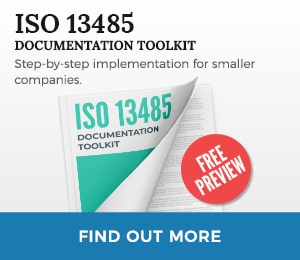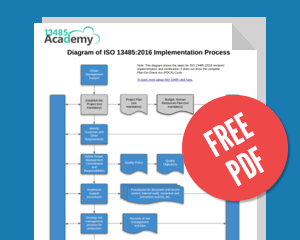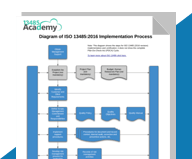Unlike the latest version of ISO 9001, which excluded the Quality Manual from requirements for documentation, the new ISO 13485 kept the requirement for a Quality Manual partly because it is based on ISO 9001:2008. Considering the changes between ISO 9001:2000 and ISO 9001:2008, which reflected on the new ISO 13485:2016 (the new version of ISO 13485 is based on ISO 9001:2008, while the old version was based on ISO 9001:2000), the requirements for the Quality Manual haven’t suffered significant changes. Still, this is a good opportunity to update your manual and make it better and more suitable to your company.
The point of the Quality Manual
For the most part, organizations are able to create Quality Manuals that technically meet the ISO 13485 requirements – but, they miss the whole point of having this document. As a result, time and effort are wasted creating a huge document that no one will ever read – sometimes upwards of 20, 30, even 50 pages – and instead of being a fundamental document of the Quality Management System (QMS), it’s so much paper destined for the recycling bin.
A good Quality Manual that is brief and to the point can bring many benefits to an organization and its QMS:
- It offers a medium for the organization to present its commitment and approach to quality management.
- It’s a good place to document other requirements, besides those required from clause 4.2.2, in an accessible and easy-to-read format.
- It shows stakeholders that the organization truly knows how to manage the quality of its products and services.
- It helps the auditor do a better, more thorough job of auditing the QMS, and in turn, to be able to offer suggestions to improve the system.
- Perhaps best of all, it provides a good overhead view of the Quality Management System for the management representative, as well as the process owners—and who could be better suited to find areas for improvement?
Large companies and governmental bodies usually require that their suppliers have a QMS, and they sometimes even ask to see the Quality Manuals of those they are considering. Would you rather show potential clients a streamlined Quality Manual that shows you have everything well in hand, or a huge, unwieldy book that shows you don’t mind wasting resources?
How to make it?
When creating or updating your Quality Manual, as with any other requirement of the standard, you need to focus primarily on what the standard actually requires, and try to meet those requirements before going creative. When you apply this approach, it’s really not that difficult to write a good Quality Manual; just make sure you include these elements required by clause 4.2.2:
- a definition of the scope of your Quality Management System
- a list of exclusions, if any, and reasoning behind them
- a description of your processes and their interactions, preferably in graphical form, like this process flowchart
- documented procedures for the QMS or reference to them
That’s all there is to it – you can learn more in this article: ISO 13485: How to write a short quality manual.
What else can the manual contain?
Considering that the Quality Manual is a mirror of your Quality Management System, you might want to make it more appealing or more comprehensive, and add some other information that you find important for your QMS, or for the person who is about to read it. In short, I would recommend that you include (besides all the other requirements from clause 4.2.2.) the following information about your organization:
- brief description of the company (maybe even with a brief history, with the main milestones in development)
- general organization structure of your company that shows how your departments are organized
- your mission and your vision
- your processes and the interactions between them (flowchart)
- exclusions from the standard requirements, together with justification for exclusion
What do you want people to see?
Of course, this is a bit oversimplified – you can’t really put all of this information in a neat bulleted list on one page. But, the document described would meet the new clause 4 requirements, and it could serve as a valuable marketing tool to present your company to potential clients. Look at it as a positive thing—you don’t have to follow a rigid format and create piles of documents you’ll never use. Instead, you are free to use some creativity to ensure that you get the most out of each requirement. The ultimate goal of the writer of the manual is to make it appealing and easy to read so people will really use it, instead of making the fattest dust catcher on the shelf.
For a graphical representation of the implementation process, check out this free Diagram of ISO 13485:2016 Implementation Process.

 Waqas Imam
Waqas Imam 



